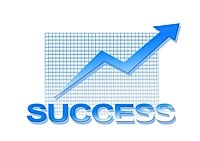
I’m Sonia Kapadia and I’m going for it all. I’m an entrepreneur, business woman, wife, and soon to be mom. I’m definitely not the stereotype you see in the tech world these days, and I don’t think I’ll fit that pattern anytime soon, but I’ve been working hard at trying to break the mold and build a successful startup. In this column, I plan to talk about the intersection of being a woman entrepreneur and balancing family life. It hasn’t been easy, and I certainly don’t have all the answers, but I’m excited to share my journey with all of you.
One of the issues I’ve been struggling with these days is what am I going to do when the baby comes? I get this question from others on a daily basis. And I receive all sorts of unsolicited comments from others either encouraging me that things will be fine: “You can make it work”, or discouraging me saying: “Well your business will surely suffer,” or “Sounds like you’re going to take some serious time off for awhile.” It’s a fair question to ask I guess and I try not to get offended when others are pessimistic about me not being able to balance come Baby K’s arrival. Because you see, I’ve been working full force on Taste Savant, my first baby, for the last year. And as my belly is getting bigger, I haven’t been slowing down, but instead have been speeding up. So it begs the question: What will I actually do when this child comes?





















